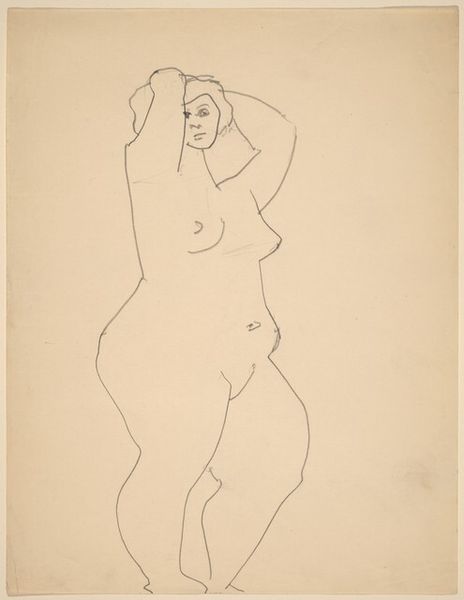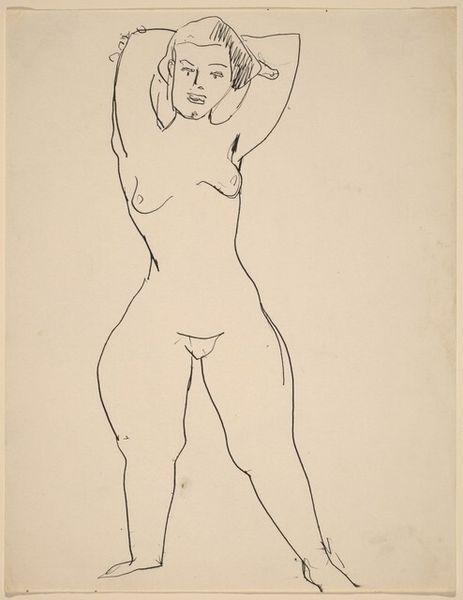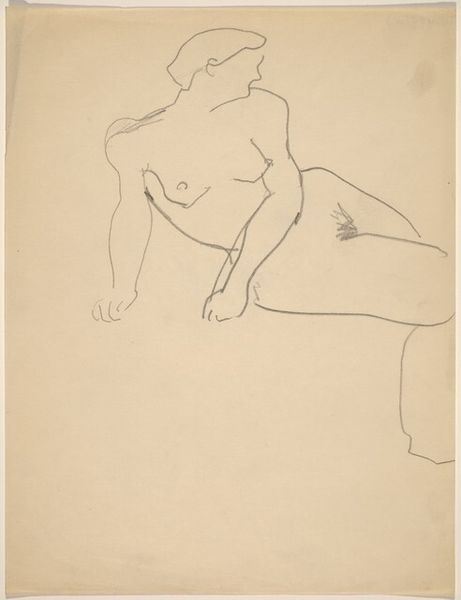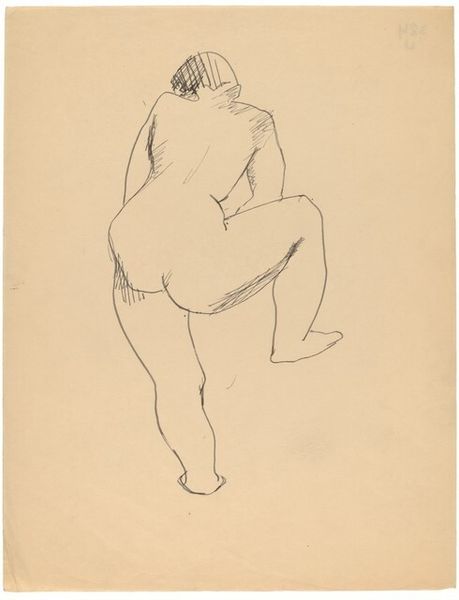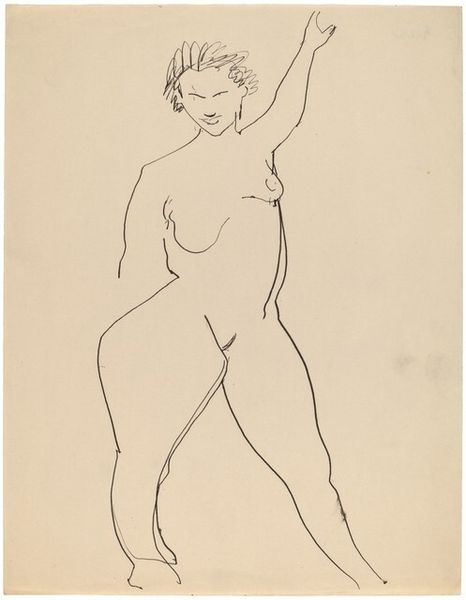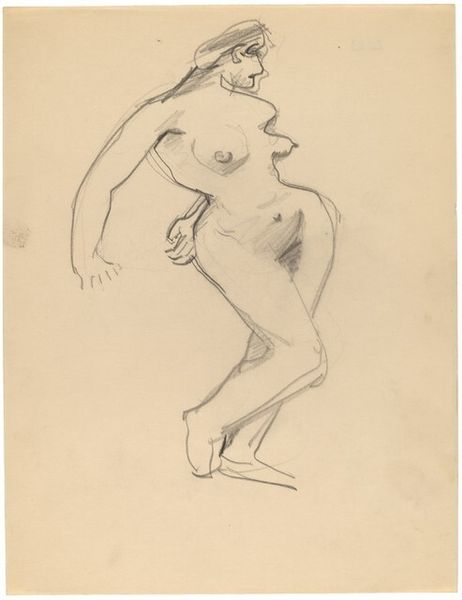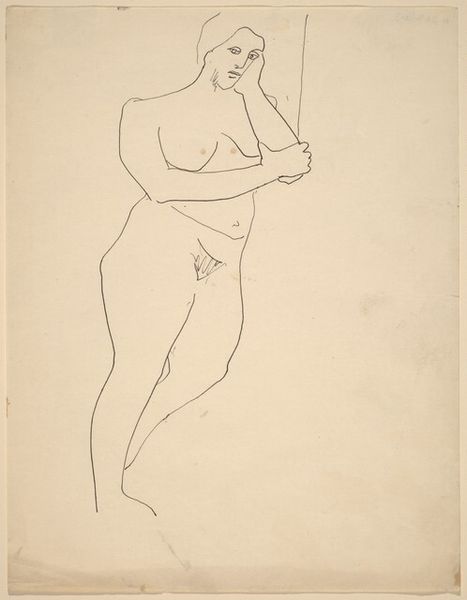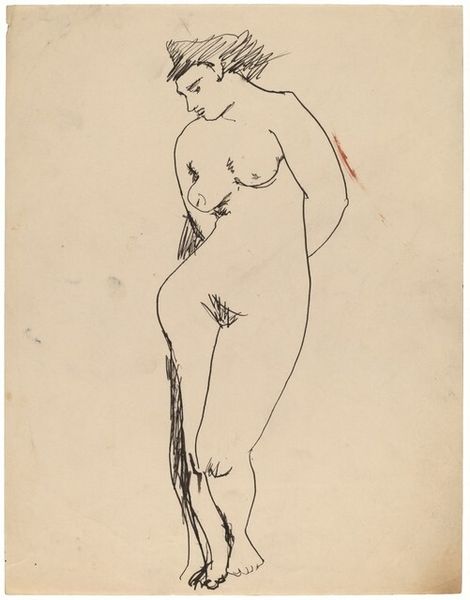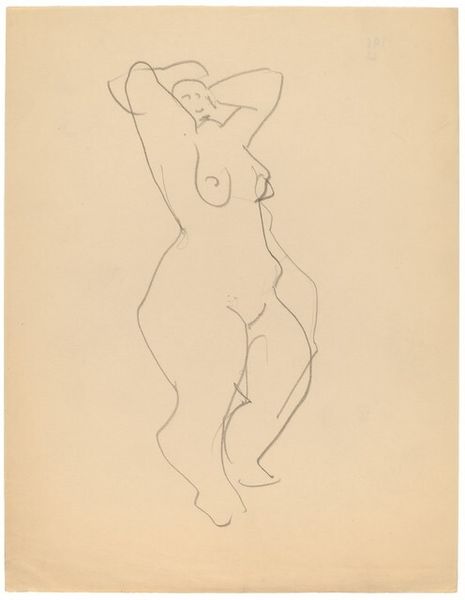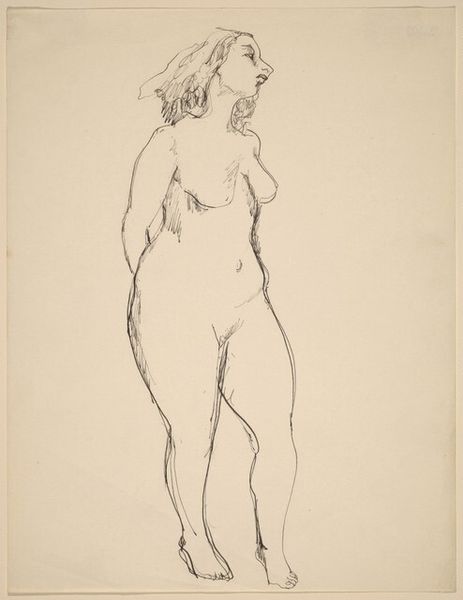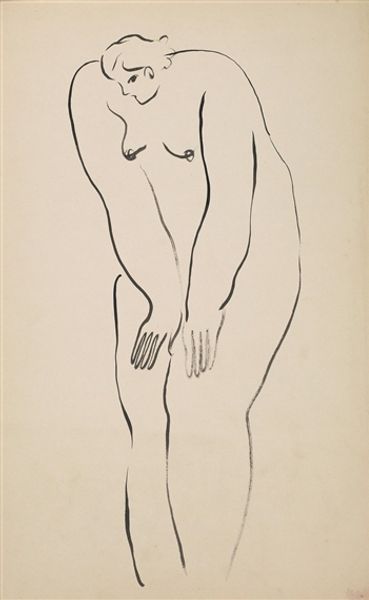
drawing, pencil
#
portrait
#
drawing
#
figuration
#
pencil
#
academic-art
#
nude
Copyright: National Gallery of Art: CC0 1.0
Curator: This is Mark Rothko’s pencil drawing titled, "Standing Nude, Side View Facing Right, Head Turned Away.” Editor: The figure seems so fragile, almost provisional. Rothko captures a momentary gesture; you can almost feel the pose shift as you look at it. Curator: Indeed. The economical lines are evocative, showing us that Rothko worked diligently in life drawing long before abstract expressionism defined him. It's about line, pressure, the type of pencil used, and the surface texture. Editor: And how that work then informs his approach to abstraction! Think of the body—the nude, specifically—as this enduring, loaded site throughout art history. How does Rothko, even in these academic exercises, contend with the historical gaze and societal expectations thrust upon female bodies? Curator: These academic drawings reveal the foundational role of skill and labor behind art making. Think of the process—the preparation of the paper, the selection of the pencil. The paper stock can change the nature of the work completed. Editor: It speaks volumes, doesn’t it? Even without the bold color fields he’s known for, there's already an engagement with interiority here. The facelessness allows her to exist beyond a purely physical object; she becomes a vessel for exploring human experience and vulnerability. Consider the drawing’s date, the unnamed model who likely held the pose…all facets contributing to the narrative. Curator: I wonder what type of paper Rothko preferred for his sketches. Was it mass produced? Individually made? Machine cut? Each choice contributes meaning. This work emphasizes the hand and skill involved in representing a figure, breaking the process down to raw materials and lines. Editor: A lot of art historical study marginalizes or even erases women figures while glorifying the male gaze. Looking at pieces like this encourages us to reimagine such spaces beyond power dynamics while questioning representation. Curator: Precisely! So often, the labor and physicality are overshadowed by discussions of symbolism and meaning, but, really, it all exists together! Editor: Agreed, the politics of representation meets the raw physicality of art production. It’s a poignant space. Curator: Absolutely! It truly highlights the interplay between the concrete and the ephemeral.
Comments
No comments
Be the first to comment and join the conversation on the ultimate creative platform.
